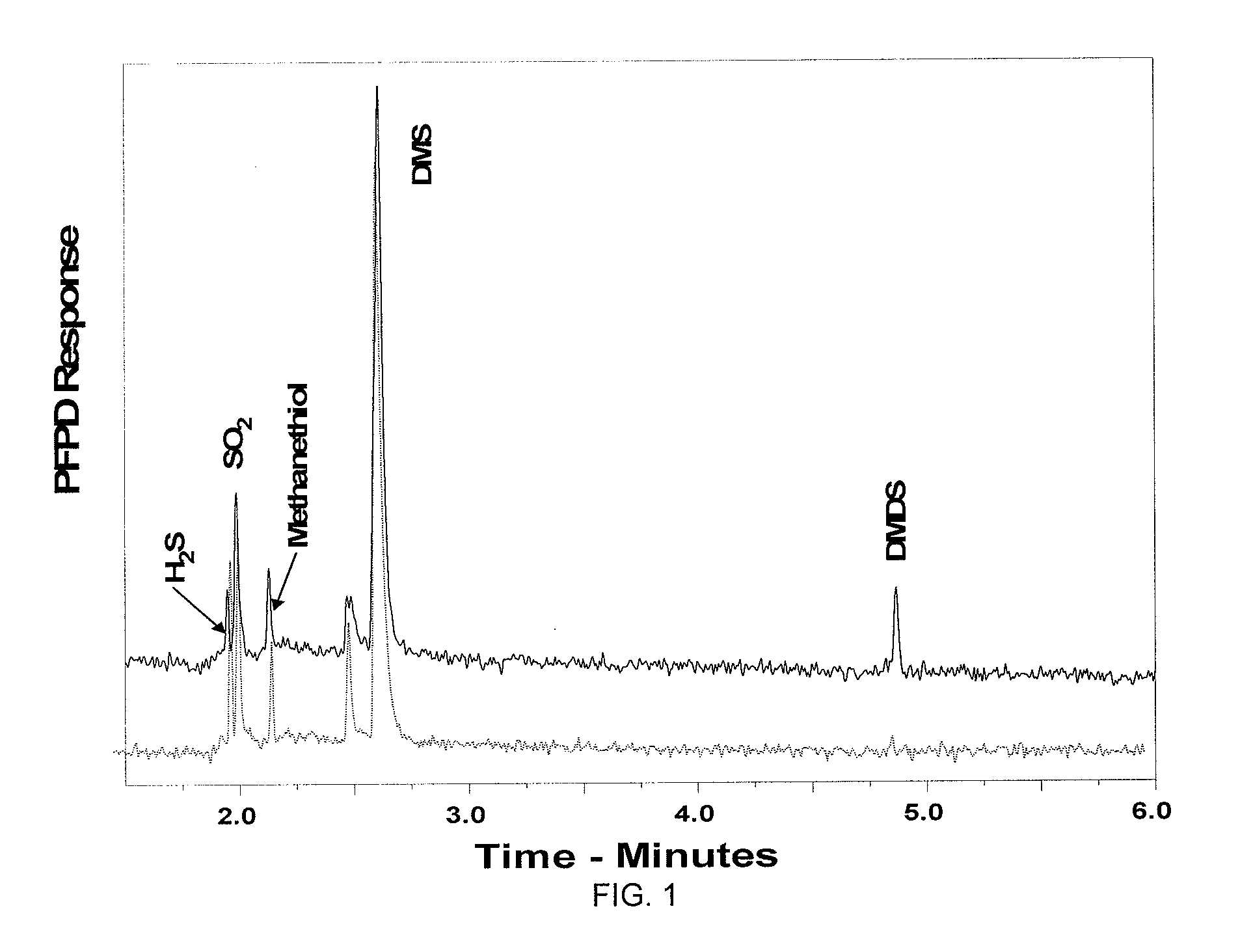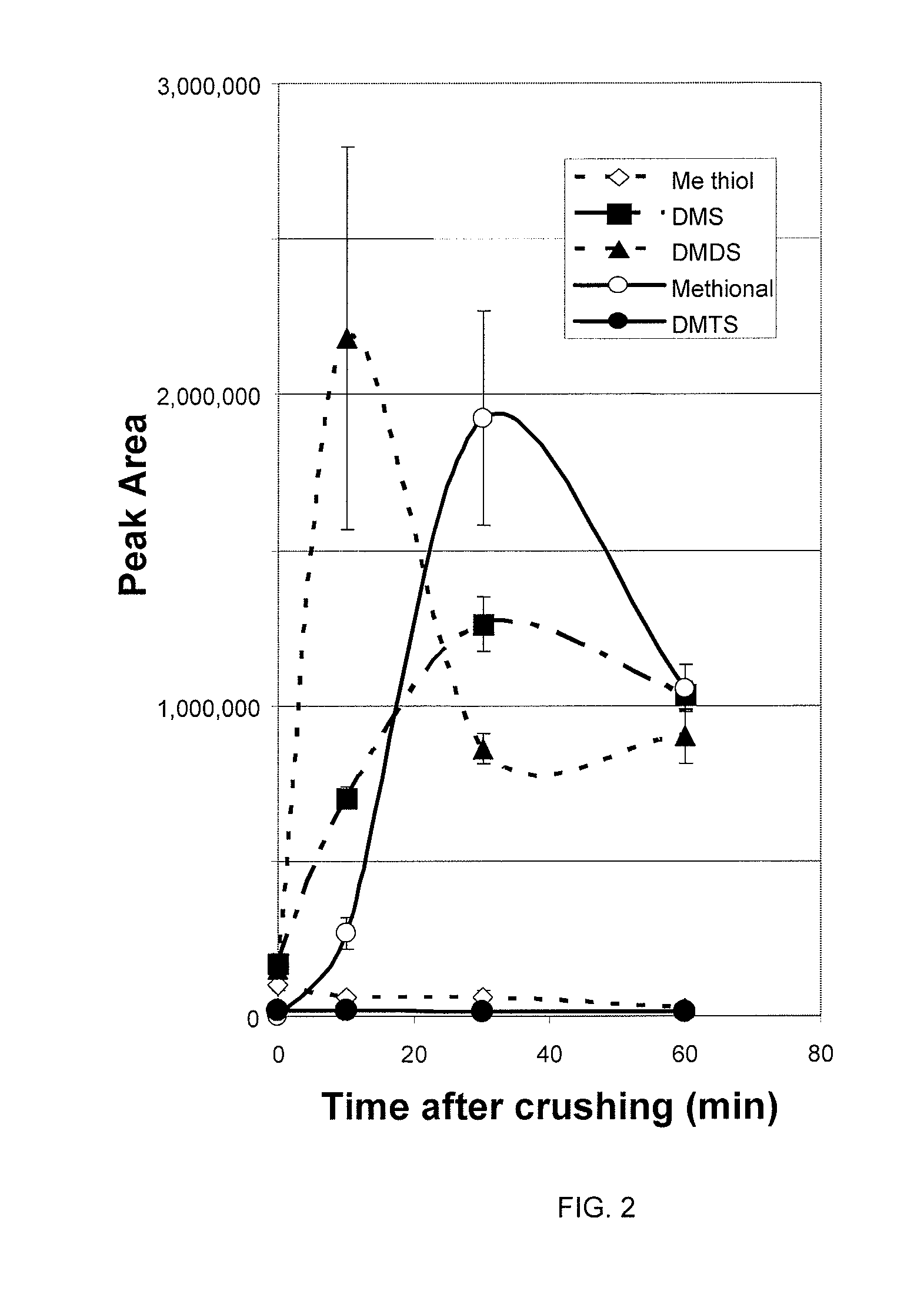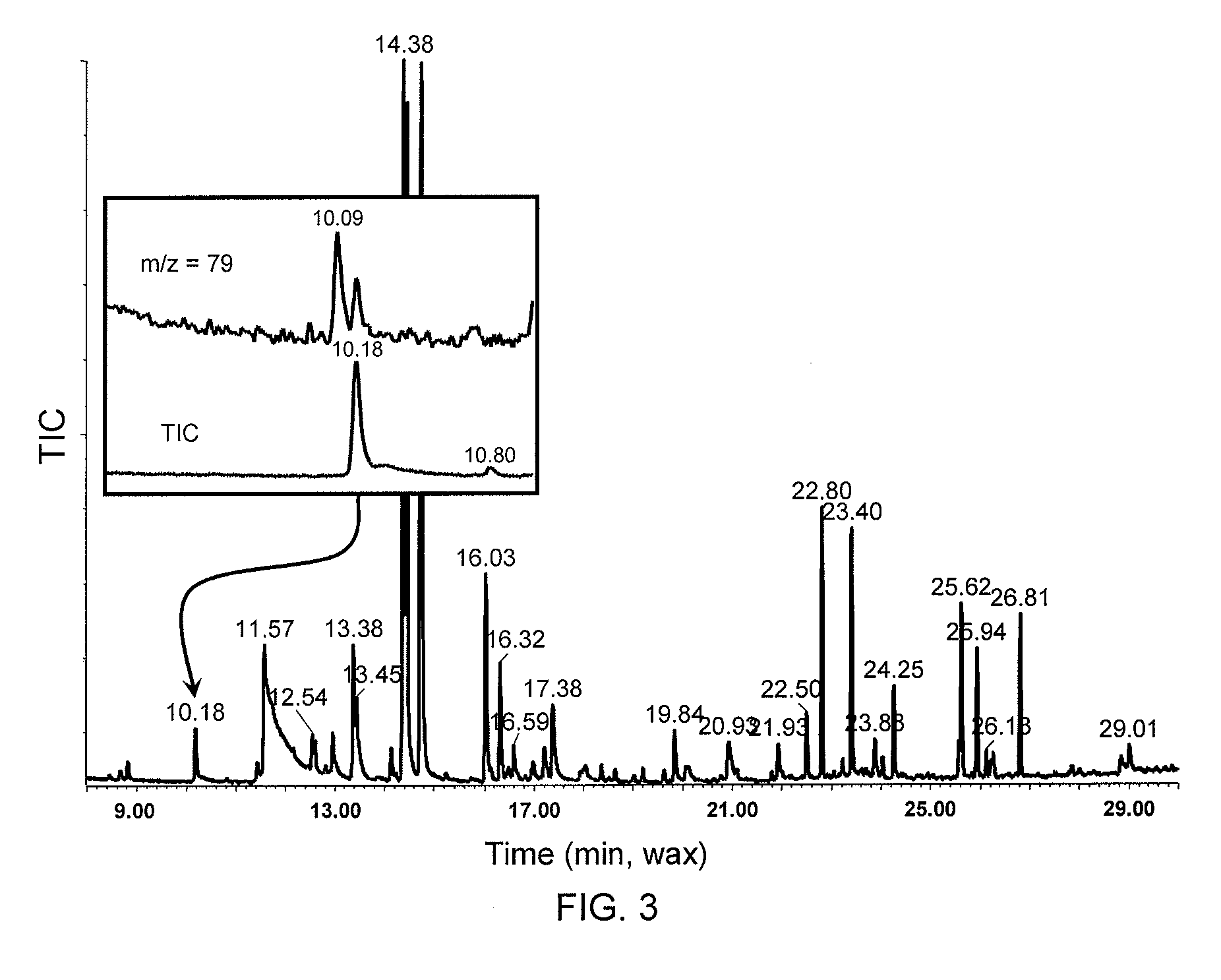Methods and Compositions for the Treatment and Prevention of Citrus Greening Disease
a technology of citrus greening disease and compositions, applied in the field of insecticide compositions, can solve the problems of citrus trees that become infected with the devastating citrus greening disease go into decline, citrus trees that are infected go into decline, and fruit taste is o
- Summary
- Abstract
- Description
- Claims
- Application Information
AI Technical Summary
Problems solved by technology
Method used
Image
Examples
example 1
Leaf Samples
[0032]Leaf flush from guava (Psidium guajava L.; Myrtaceae), two cultivars of sweet orange, Citrus sinensis L. Rutaceae (Hamlin and Valencia), Ray Ruby grapefruit (C. paradisi Macf.) and Rough lemon (C. limon Burm.) were harvested, weighed on Mettler® AE 160 (Greifensee, Switzerland) balance and immediately placed in 40 mL glass septum-sealed vials. Approximately 3.5 g of leaves from each plant were placed in the vial and equilibrated at room temperature for ˜30 min. Psidium guajava and C. limon were obtained from Cee Jay Nursery, Lakeland, Fla. and a managed citrus grove at the Citrus Research and Education Center (CREC) in Lake Alfred, Fla., respectively, in 2007 and their seedlings have been maintained in a screenhouse since then. Seedlings of C. sinensis and C. paradisi were obtained from Southern Citrus Nurseries LLC, Dundee, Fla. in 2007. These citrus cultivars were selected for analysis because Hamlin and Valencia oranges, as well as Ray Ruby grapefruit are the mo...
example 2
SPME Headspace Sampling
[0033]A 50 / 30 μm divinylbenzene / Carboxen / polydimethylsiloxane (DVB / Carboxen / PDMS) Stable Flex® solid phase micro extraction (SPME) fiber (Supelco, Inc., Bellefonte, Pa.) was manually inserted into a septum-sealed 40 mL glass vial for ˜1 (GC-PFPD) or 15 (GC-MS) minutes to collect emanated static head space volatiles from the uncrushed guava or citrus leaf flush after it had equilibrated with ambient room conditions. Subsequently, the vial was opened to crush the leaf samples and rapidly closed to minimize volatile loss. Thereafter, the SPME fiber was again exposed to static volatiles within the vial immediately after it was closed (0 min). The vial was sampled after 10, 30 and 60 min. to investigate kinetics of volatile production from crushed leaves. Following volatile collection, the volatile-impregnated fiber was transferred to the injector of the GC-PFPD or GC-MS and desorbed for ˜5 min at 200° C. (for the ZB-5 column) and 240° C. (for the DB-wax column). (...
example 3
GC-Pulse Flame Photometric Detector, PFPD
[0034]Sulfur-compounds were analyzed using a Pulsed Flame Photometric Detector (PFPD) (Model 5380, OI Analytical Co., College Station, Tex.) set up in the sulfur mode coupled to a HP-5890 Series II GC Separation. Tentative identification was accomplished using three different capillary columns: (a) ZB-5 (30 m×0.32 mm. i.d.×0.5 μm, (Zebron ZB-5, Phenomenex, Inc., Torrance, Calif.); (b) DB-wax (30 m×0.32 mm. i.d.×0.5 μm, J&W Scientific Inc.; Folsom, Calif.); and (c) a Gas Pro PLOT column (30 m×0.32 mm. i.d., Agilent Technologies Inc., Palo Alto, Calif.). The ZB-5 column oven temperature was programmed from 40 to 265° C. and from 40 to 240° C. for DB-wax at 7° C. / min, with a 5 min hold at the maximum temperature. Helium was used as carrier gas at flow rate of 1.5 mL / min. Injector and detector temperature were 200° C. and 250° C. respectively. A 0.75 mm injector liner was employed to improve peak shape and chromatographic efficiency. Injections w...
PUM
| Property | Measurement | Unit |
|---|---|---|
| Concentration | aaaaa | aaaaa |
| Fraction | aaaaa | aaaaa |
| Fraction | aaaaa | aaaaa |
Abstract
Description
Claims
Application Information
 Login to View More
Login to View More - R&D
- Intellectual Property
- Life Sciences
- Materials
- Tech Scout
- Unparalleled Data Quality
- Higher Quality Content
- 60% Fewer Hallucinations
Browse by: Latest US Patents, China's latest patents, Technical Efficacy Thesaurus, Application Domain, Technology Topic, Popular Technical Reports.
© 2025 PatSnap. All rights reserved.Legal|Privacy policy|Modern Slavery Act Transparency Statement|Sitemap|About US| Contact US: help@patsnap.com



